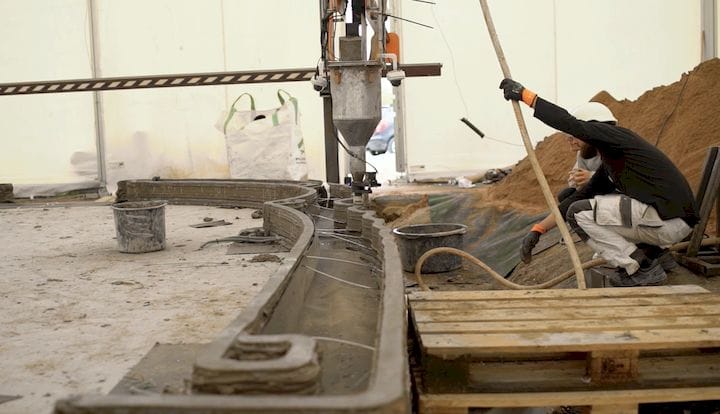![COBOD International will focus on construction 3D printing [Source: COBOD International]](https://fabbaloo.com/wp-content/uploads/2020/05/image-asset_img_5eb0a61e5cc6f.jpg)
3D Printhuset announced the creation of a new construction 3D printing company, COBOD International.
It’s not entirely new, however, as it is really the construction 3D printing bits from originating company 3D Printhuset of Denmark. The company began, and still operates as, a regional 3D print reseller based in Copenhagen. They sell a number of popular 3D printers to the public, including models from CraftBot, ZMorph, Sinterit, XYZprinting, and WASP, as well as associated materials and accessories, such as 3D scanners. The company also provides training courses and print services.
![3D Printhuset’s headquarters in Copenhagen [Source: Google]](https://fabbaloo.com/wp-content/uploads/2020/05/image-asset_img_5eb0a61ed8458.jpg)
And also construction 3D printing, with their BOD2 construction 3D printer.
However, they now are spinning off this part of their operation to a separate entity. They explain:
“Due to the increased demand for 3D construction printers, 3D Printhuset, Denmark, which 3D printed the first building in Europe, The BOD, has decided to separate all its’ 3D construction printing activities in a new company called COBOD International. From here on COBOD will be responsible for the sale and manufacture of the popular BOD2 3D construction printer – an upgraded, modular, improved and 10 times faster version of the BOD1 printer, which printed Europe’s first 3D printed building, The BOD, in Copenhagen.”
![The COBOD International BOD2 construction 3D printer in operation [Source: COBOD International]](https://fabbaloo.com/wp-content/uploads/2020/05/image-asset_img_5eb0a61f274de.jpg)
Apparently the name of the new company, COBOD, is carefully chosen. Communication Manager Asger Dath says:
“We wanted a name for the new company that clearly had a reference to construction, to our previous activities and to the automation of the building process, which our construction printers offer. As The BOD building, enjoys a unique and well-deserved reputation as the first fully permitted 3D printed building in Europe, it was obvious that the new name should have a reference to the BOD.
Combining that with a ‘CO’ as an abbreviation for construction in front of the ‘BOD’ resulted in the name COBOD. Taken into consideration that ‘cobod’ phonetically resembles ‘robot’, hereby clearly indicating that the company is into automatized construction processes, it was clear that COBOD should be the new name.”
While seemingly a minor corporate move, I find this quite interesting for several reasons.
Sure, it’s entirely understandable that an internationally-deployed construction operation doesn’t really mix well with a consumer/professional-oriented regional 3D print reseller, but there are likely more reasons for this split.
Beyond the simple administrative benefits achievable by separating the two entirely different businesses, it presents a “clean” investable corporation that may attract new international investors.
Imagine a potential investor in the project. If they’re attracted to the notion of construction 3D printing would they want to hand over a large pile of cash to a regional 3D print reseller, where it could be unclear whether the investment was to be used for the reselling or the construction? Or instead a company dedicated to the target construction 3D printing market?
I think the answer is clear.
![The COBOD International BOD2 construction 3D printer can produce very tall walls [Source: COBOD International]](https://fabbaloo.com/wp-content/uploads/2020/05/image-asset_img_5eb0a61f75b68.jpg)
But there’s another implication here: if 3D Printhuset has made the move to reposition for investment, it may be that they see the opportunity for investment. They may have been told by investors that they have interest.
This is good news for construction 3D printing, which has been on a bit of a roller coaster ride lately, with successes and failures. More money invested in the technology can not do any harm and could even assist the development of the technology to a point where it becomes a more accepted construction method.
Via 3D Printhuset (Danish) and COBOD











COBOD’s BOD2 construction 3D printer seems to be catching on as the company has made multiple sales of the new device.